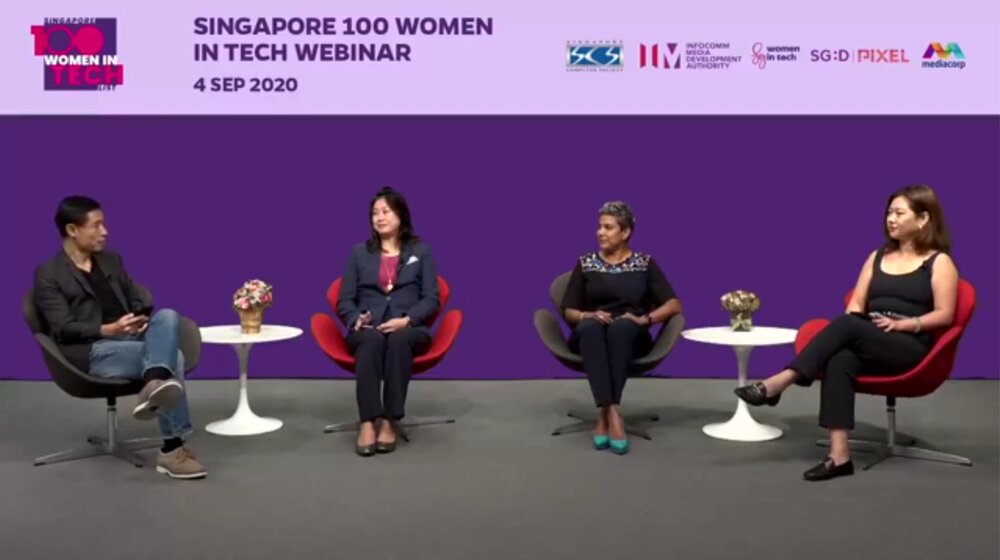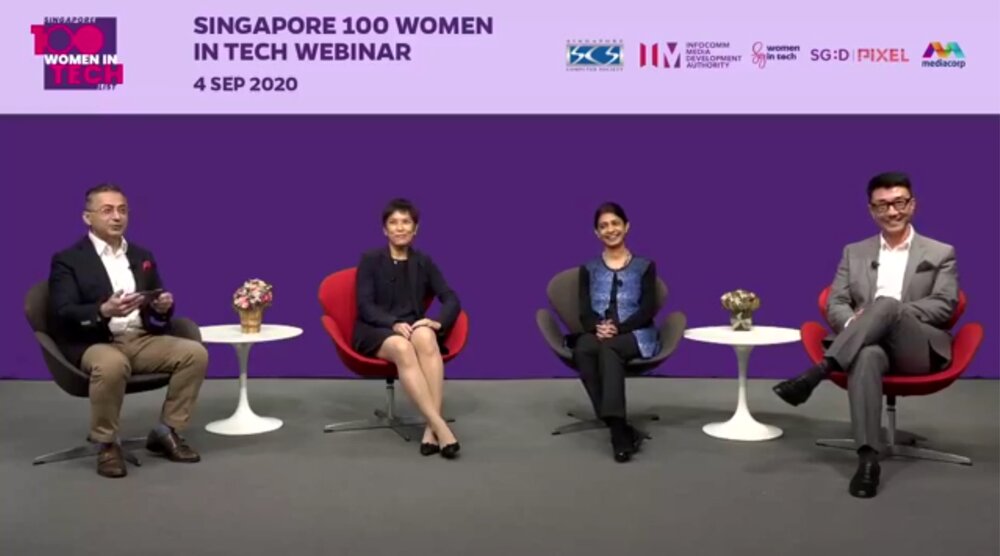
By Kami Navarro
It’s no secret that tech has a gender diversity problem. While women played a formative role in the early days of tech, the percentage of women in tech has progressively diminished—and even stagnated—over the years. In Singapore, women representation in the tech industry has hovered around the 30 percent mark for the past twenty years. But it’s not too late to fix this problem now.
What, then, does the future have in store for gender diversity and how can it finally be achieved? This question was at the forefront of two panel discussions held on 4 September 2020, helmed by some of the tech trailblazers recognised on the inaugural Singapore 100 Women in Tech list. IMPact News brings you the top highlights from the session.
The future is female
Over the past decade, female representation on boards and C-suites at tech companies have increased worldwide, according to S&P Global. Still, there’s a long way to go before gender diversity can truly be achieved. “If I had a big, hairy, audacious goal, I’d say tech equity,” said Ms Uma Thana Balasingam, VMware’s Vice President and Channel Chief for Asia Pacific and Japan. “Equal representation—whether it’s girls at 15 deciding whether or not they want to get into STEM to early, mid and senior-career women.”

Associate Professor Sierin Lim from Nanyang Technological University shared Ms Balasingam’s goal. “My vision is to increase the critical mass of women in tech,” she said. In engineering, the skewed gender ratio has stark, real-life consequences for women. Until 2011, for instance, seat belts were tested solely on male crash test dummies. This meant women were more likely to get injured despite wearing seat belts. “This is why we need more women to design and engineer solutions, so that things in this world work for both genders,” explained Prof Lim.
Aside from engineering, venture capital is also dominated by men, said Ms Pocket Sun, Founder of SoGal Ventures. “Venture capital propels technology forward into the future. If these decisions about the future of technology are made by a male majority, technology will be biased and it won’t be fair,” said Ms Sun. Hence, to make women more prominent in tech, society has to collectively build a community to support innovation for women, summarised Mr Frank Koo, LinkedIn’s Talent and Learning Solutions Head of Asia.
To this end, Prof Lim co-started the Promotion of Women in Engineering, Research and Science (POWERS) organisation to identify the challenges faced by women in STEM. Meanwhile, Ms Balansingam launched the Singapore chapter of LeanIn.org to provide women with the support needed to achieve their goals. Finally, Ms Sun founded SheVC, a community for women investing in tech.
A deep dive into diversity
According to Singapore’s top industry leaders, improving gender diversity isn’t just good for tech—it’s also good for business. “If we do not embrace gender diversity, we lose half the addressable workforce that we can really bring into the industry,” explained Mr Wong Wai Meng, CEO of Keppel Data Centers and chairman of SG Tech.
Beyond adding to the talent pool, diversity brings a myriad of other benefits to the table, from increasing staff output, revenue and potentially, even an entire country’s GDP.

Improving gender diversity should start at the top, according to Ms Vaishali Rastogi, Global Leader for Technology, Media and Telecommunications Practice at Boston Consulting Group (BCG). Speaking to business leaders, Ms Rastogi emphasised, “Make sure that your policies and actions are meaningful. As a leader, how do you make sure that you will provide an environment where women feel engaged and empowered?”
As a result, BCG is now actively recruiting women looking to make a career change. Likewise, DBS Bank has turned to hackathons to hire diverse technologists into their team, launching Hack2Hire-Her to specifically increase female intake last year. Despite these initiatives, women still have a significant role to play on an individual level. “You need to have the self-confidence and the grit to stay on course,” urged Ms Soh Siew Choo, Managing Director at DBS Bank.
As COVID-19 accelerates digitalisation across the board, female talent is more important, agreed the panellists.
“Digital transformation is here and real,” remarked panel moderator Mr Amit Midha, President of Asia Pacific & Japan and Global Digital Cities at Dell Technologies. “This couldn’t be a better time to be talking about women in tech.”
Jointly organised by the Singapore Women in Tech (SGWIT), Singapore Computer Society (SCS), Infocomm Media Development Authority (IMDA) and Mediacorp, the Singapore 100 Women in Tech list celebrates the local women role models making significant contributions to tech. The full list can be accessed here (153.11KB).


.webp)